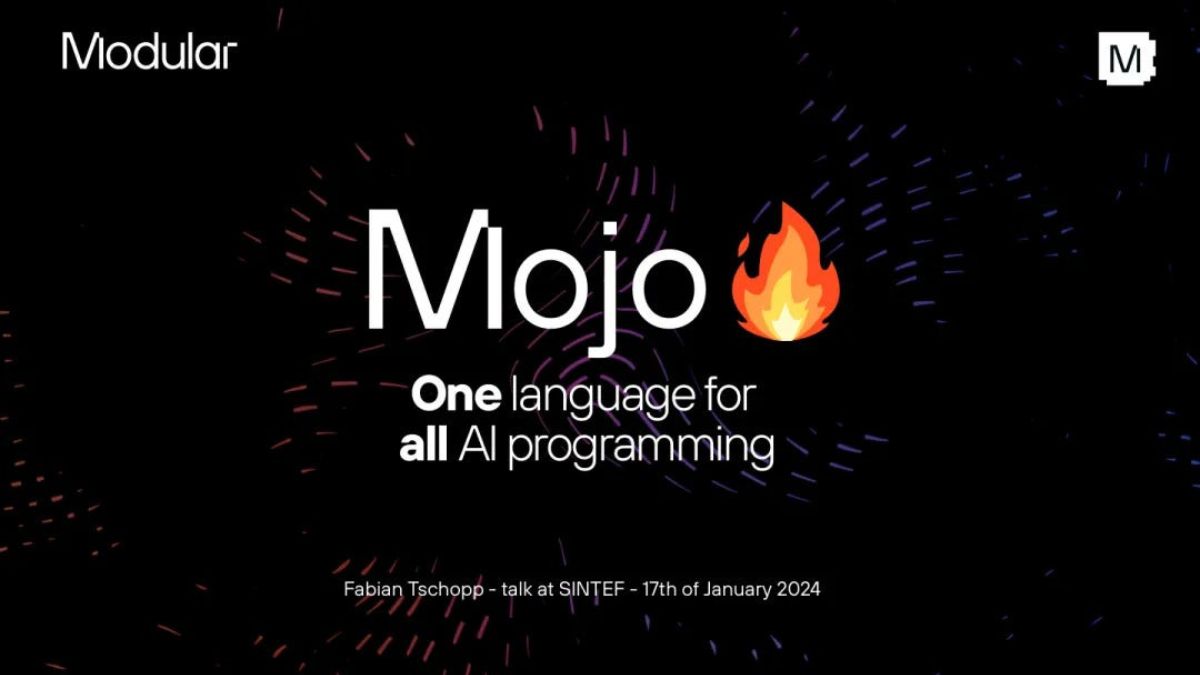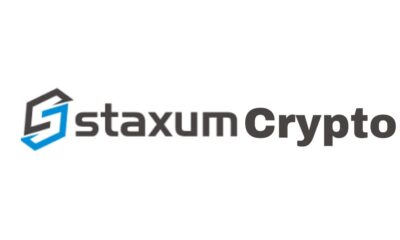Technology
“Decoding Google SEO Xiaoyan: Navigating the Path to Digital Visibility”

Introduction
An essential component of Google’s search algorithm, Google SEO Xiaoyan, describes the dynamic world of online exposure. Gaining a knowledge of the subtleties of the Xiaoyan Algorithm is essential for success in the complex realm of Search Engine Optimization (SEO). To provide accurate and worthwhile search results, this algorithm takes into account variables including relevancy, quality, and user experience. This guide seeks to clarify the importance, implications, and optimal methodologies of Google SEO Xiaoyan as we delve into its intricacies. Watch this space to learn the tactics that will enable your website to prosper in the cutthroat world of internet search.
Brief explanation of Google SEO Xiaoyan
A crucial part of Google’s search algorithm, Google SEO Xiaoyan greatly influences how websites are ranked in search results. Xiaoyan is an essential tool for evaluating the quality and relevancy of web material with the goal of providing consumers with accurate and worthwhile results. It includes a complex range of elements, including as user experience, technological elements, mobile responsiveness, off-page tactics, and on-page optimization. Webmasters and digital marketers who want to improve their online exposure and make sure their content complies with the constantly changing standards set by Google’s search algorithm must understand Google SEO Xiaoyan.
Importance of understanding and optimizing for Google SEO Xiaoyan
In today’s cutthroat online environment, comprehending and optimizing for Google SEO Xiaoyan is essential for digital success. One of the most important aspects of Google’s search engine, this complex algorithm is essential to how webpages are ranked and shown. Businesses can modify their online tactics to conform to the algorithm’s inclinations and get improved search ranks and organic traffic by understanding the nuances of Google SEO Xiaoyan. It entails adopting mobile responsiveness, improving on- and off-page SEO, remaining current with algorithm changes, and providing a satisfying user experience. To put it simply, the key to fully realizing the potential of online visibility and audience engagement is to become proficient in Google SEO Xiaoyan.
Key components and factors
Search rankings are greatly influenced by a number of important components and elements that Google SEO Xiaoyan takes into account. User experience, high-quality content, and relevancy are all highly valued by the algorithm. In on-page SEO, meta tags, title tags, and keyword optimization are essential components that guarantee content matches user queries.The increasing trend of mobile searches highlights the importance of mobile optimization. The significance of having a technically sound website is emphasized by the fact that technical factors like structured data, schema markup, and website speed also affect Google SEO Xiaoyan. To successfully navigate the Google SEO Xiaoyan terrain, one must essentially take a holistic approach that combines on-page, off-page, technical, and user-centric tactics.
Google SEO Xiaoyan Algorithm Updates
The digital world is shaped by significant events such as the Google SEO Xiaoyan Algorithm Updates. Google’s search algorithm is always changing, and these adjustments have an impact on search ranks and tactics. Maintaining and enhancing search visibility requires being aware of Google SEO Xiaoyan changes, from significant core modifications to minor algorithmic adjustments. Webmasters and SEO experts must modify their strategies to conform to the changing standards established by the Xiaoyan Algorithm. Keeping a close watch on these changes guarantees that websites remain competitive and optimized in the ever-changing world of online search, giving users relevant and excellent results.
Impact on search rankings and strategies
Google SEO Xiaoyan has a significant impact on search rankings and shapes the online environment for businesses and websites. Maintaining or raising rankings requires an understanding of these changes and the ability to adjust accordingly. Relevant keywords, high-quality content, and a user-centered strategy are crucial. Additionally, SEO professionals should proactively modify techniques to ensure continued presence by remaining updated about Xiaoyan’s algorithm modifications.
On-Page Optimization for Google SEO Xiaoyan
A strategy procedure called “on-page optimization” for Google SEO Xiaoyane aims to improve each web page’s exposure and relevancy within the Google search algorithm. This important component entails the careful optimization of things that are immediately on a webpage. Search engines interpret content optimization that is effective and strategically uses keywords as an indication of relevance. Businesses and website owners can dramatically raise their Google rankings by concentrating on these on-page components, which will guarantee that their content satisfies the complex requirements of the Google SEO Xiaoyane algorithm.
Off-Page Optimization for Google SEO Xiaoyan
Improving your website’s visibility in Google SEO Xiaoyan requires off-page optimization. It goes beyond your website and concentrates on outside elements that affect your online presence. The development of high-quality backlinks, which act as endorsements from reliable websites and inform Google of the authority and relevancy of your content, is the cornerstone of this strategy. Additionally important are social signals like likes, shares, and comments on different platforms. You may raise your website’s search engine rankings and position it as a reliable and important resource in the Google SEO Xiaoyane ecosystem by methodically developing a strong off-page profile.
Mobile Optimization and Google SEO Xiaoyan
In Google SEO Xiaoyan’s constantly changing environment, mobile optimization is essential. Being mobile-friendly is now more important than ever due to the increase in mobile consumers. For mobile optimization to be effective, mobile-friendly content and responsive design—which easily adjusts to different screen sizes—are crucial. More importantly, it becomes necessary in light of Google’s emphasis on mobile-first indexing, which gives priority to a website’s mobile version in search results. Website owners need to adhere to Google SEO Xiaoyane and emphasize mobile optimization tactics in order to keep ahead of the competition in the digital space and give users a smooth and enjoyable mobile experience.
Technical SEO and Google SEO Xiaoyan
Optimizing for Google SEO Xiaoyane, also known as the Xiaoyane Algorithm, requires a strong focus on technical SEO’s. The technological components of a website that affect its search engine performance are the main emphasis of this aspect. One must take into account the efficiency and speed of the website, use schema markup and structured data, and make sure that visitors and search engine crawlers can navigate the site with ease. Websites can improve their user experience and exposure by taking care of technical issues like server responsiveness and effective code. A website must be in compliance with Google SEO Xiaoyan’s specifications in order to gain the best search ranks and visibility. Technical SEO is a crucial part of any comprehensive SEO campaign.
User Experience and Google SEO Xiaoyan
User Experience (UX) is very important in the Google SEO Xiaoyan field. When it comes to providing superior search results, Google gives preference to websites that offer a smooth and pleasant user experience. For websites to rank well, features like quick loading times, simple navigation, and mobile friendliness are essential. Prioritizing user experience not only complies with search engine criteria but also guarantees that visitors have a great experience on your site, which eventually improves search visibility and online success as Google’s algorithms get more complex.
Local SEO and Google SEO Xiaoyan
The most important aspect of Google SEO Xiaoyane is local SEO, which guarantees that companies may connect with their target market in particular regions. Local search engine optimization is highly valued by Google SEO Xiaoyane, who emphasizes the use of local keywords, Google My Business optimization, and correct business information. Businesses may improve their online visibility and rank higher on Google’s search engine results pages by customizing their material to local tastes. This focused strategy raises awareness and increases the possibility of drawing in local clients who are actively looking for goods or services.
Content Freshness and Google SEO Xiaoyan
When it comes to Google SEO Xiaoyan, content freshness is a critical strategic component.Content Freshness demonstrates a dedication to giving consumers relevant and current content, which is in perfect harmony with Google’s objective of presenting the highest quality search results. Refreshing your material frequently improves user experience by engaging users and maintaining Google’s favorability of your website. In the always changing world of Google SEO Xiaoyane, embracing content freshness as a fundamental component of your strategy guarantees that your online presence stays dynamic and competitive.
Voice Search and Google SEO Xiaoyan
In the field of Google SEO Xiaoyane, voice search has become a game-changer, greatly impacting search behavior. Natural language searches are currently being used by users to communicate with search engines due to the widespread use of voice-activated devices. In the context of Google SEO Xiaoyane, voice search optimization requires content adaptation to match conversational patterns. This entails using long-tail keywords, paying attention to user intent, and creating content that offers succinct, direct responses. Adopting a more informal and conversational tone for your content strategy will improve alignment with the way people express voice inquiries, which will increase the visibility of your website in voice search results. In the fast-paced world of Google SEO Xiaoyane, stay aware of how the market is changing in order to stay competitive.
Google SEO Xiaoyan Tools and Resources
To properly optimize, navigating the complexities of Google SEO Xiaoyan calls for the appropriate tools and resources. There are several priceless tools accessible for analytics, keyword research, and website performance tracking. Well-liked choices include Moz for backlink tracking, SEMrush for competitive analysis, and Google Analytics for thorough insights. Using tools such as Ahrefs can help determine popular subjects and evaluate the effectiveness of material. Furthermore, Google Search Console provides vital information about the health and indexing status of websites. It’s also important to keep up with industry developments. Google’s official SEO guidelines and respectable sites like Moz and Search Engine Journal offer helpful updates for understanding the subtleties of Google SEO Xiaoyane.
Common Mistakes to Avoid in Google SEO Xiaoyan
It is crucial to stay away from typical blunders in the ever-changing world of Google SEO Xiaoyane in order to preserve top search ranks. Ignoring mobile optimization and the value of a responsive design and mobile-friendly content is one common mistake. Another mistake is paying too little attention to on-page components, which can negatively affect search visibility. Examples of these elements include badly written URLs, title tags, and meta descriptions. Additionally, firms targeting particular geographic locations may have limited visibility as a result of neglecting local SEO issues. Keep in mind that algorithm upgrades are important, and you should modify your techniques accordingly, or else your search ranks may suffer. In Google SEO Xiaoyane, a proactive and all-encompassing strategy that tackles these typical errors is necessary for long-term online success.
Measuring Success in Google SEO Xiaoyan
A thorough examination of key performance indicators (KPIs) is necessary to determine the success of Google SEO Xiaoyane and the efficiency of optimization efforts. Evaluating user engagement indicators, such as time on page and bounce rate, also aids in determining the content’s relevance and appeal. Important markers of SEO performance are conversion rates and the development of high-quality backlinks. Businesses may modify their tactics, maintain their competitiveness, and constantly improve their online presence in the ever-changing Google SEO Xiaoyan market by routinely monitoring and analyzing these KPIs.
Conclusion
In conclusion, given how quickly the digital world is changing, it is imperative to grasp Google SEO Xiaoyan. This complex algorithm necessitates a proactive and flexible approach because of its complex updates and diverse components. Businesses can efficiently manage the complexity of on-page and off-page optimization, mobile responsiveness, technical SEO, and user experience by knowing the subtleties of each. To keep ahead, voice search optimization, local SEO, and fresh content are essential. The resources and technologies mentioned offer a strong basis for achievement. Sustained visibility in SEO requires constant monitoring and adjustment as the journey progresses. Website owners may leverage the power of Google SEO Xiaoyan and make sure their online presence is optimized for search engines and visitors alike by adopting the tactics described here.
Business
Popular App “NGL” Banned from Hosting Young Teens in a Groundbreaking Settlement

Introduction
In an age where technology is used on a daily basis, protecting the privacy and safety of young users is crucial. A well-known app “NGL” recently settled in a novel way, prohibiting it from hosting young teenagers. This decision has profound ramifications for app makers, parents, and teenagers alike, and it has shocked the tech community. However, why was this extreme action taken, and what does it signify for other platforms that will follow?
Background of the App
The aforementioned software has become popular among teenagers due to its user-friendly UI and captivating content. When it was first released a few years back, it gained popularity quite fast, with millions of downloads and an active user base primarily composed of youth. Its capacity to link people, let them exchange original information, and facilitate real-time communication was what made it so appealing.
Issues Leading to the Ban
Despite its popularity, the NGL app faced increasing scrutiny over several critical issues:
-
Privacy Concerns
The way the program handled user data was one of the main issues. There have been rumors that it gathers personal data from minors without providing sufficient privacy safeguards. This sparked concerns about the possible exploitation of private information and the vulnerability of minors to privacy violations. Protecting personal data in an increasingly digital world is at the center of privacy issues. Unauthorized data gathering, surveillance, data breaches, and the improper use of personal information by businesses and governments are among the problems.To protect users’ rights and preserve confidence in digital interactions, privacy requires providing users with control over their information, transparent policies, and strong security measures.
-
Inappropriate Content
Inappropriate content on the platform was a serious problem as well. The NGL app has trouble weeding out content that wasn’t appropriate for younger viewers, even with its best attempts to control user-generated content. This was against several rules pertaining to content that is appropriate for the target audience’s age as well as a risk to teenagers. Materials that are inappropriate for a specific audience because they are provocative, explicit, or damaging are referred to as inappropriate content. This encompasses, but is not restricted to, hate speech, violence, nudity, explicit language, and discriminating remarks. It is imperative that content makers and users exercise caution when sharing, making sure that it complies with moral guidelines and respects the sensibilities and age range of the target audience.
-
Lack of Parental Control
The absence of strong parental control options in the NGL app was another important consideration. Concerns around unsupervised usage and exposure to potential internet risks arose from parents’ inability to effectively monitor their children’s activities or impose appropriate restrictions. Increased hazards as a result of this problem frequently include cyberbullying, excessive screen usage, and exposure to unsuitable content. Children may acquire harmful internet behaviors without enough supervision and direction, which could harm their social and emotional growth. To close this gap and guarantee children’s and teenagers’ safe and responsible use of technology, proactive parental involvement, boundary-setting, and open communication are necessary.
Key Terms related to Ban of “NGL”
- The app is prohibited from hosting users under the age of 16.
- Implementation of stringent data privacy measures.
- Enhanced content moderation to remove inappropriate material swiftly.
- Development of advanced parental control features to allow better monitoring and restriction capabilities.
Immediate Effects on the App “NGL”
- A significant drop in user numbers as young teens were barred from the platform.
- Financial implications due to the loss of a considerable segment of the user base.
- Technical challenges in implementing the new privacy and control features.
Response from the NGL App’s Developers
The NGL app’s developers are receptive to customer feedback and genuinely care about it. They place a high priority on incorporating user-suggested changes and rapidly addressing difficulties. Open lines of communication guarantee that users’ problems are acknowledged and addressed quickly. Their commitment to improving user experience, addressing bugs, and adding new features is seen in the frequent updates they provide. By being proactive in its approach, the NGL app establishes itself as responsive and user-centric in its development procedures, which in turn builds trust and loyalty among users.
Reactions from Users
The section “Reactions from Users” compiles the various opinions users have about goods, services, or information. These responses have a significant impact on brand perception and loyalty as crucial markers of customer satisfaction. While unfavorable reactions can highlight areas that require development, positive replies frequently indicate endorsement and trust. Analyzing social media activity, reviews, and feedback is a crucial part of understanding customer reactions. This helps organizations improve user experience and adjust their tactics.
Teen Users’ Perspective
Today’s teens see technology as essential to their education, social lives, and ability to express themselves. They use sites like social media with a mixture of enthusiasm and prudence, conscious of the advantages and disadvantages. Their digital experiences are impacted by worries about privacy, cyberbullying, and mental health, and their online habits are greatly influenced by trends and peer pressure. Notwithstanding NGL drawbacks, technology gives teenagers unparalleled access to knowledge and connectivity, which influences their learning, socialization, and perception of the outside world.
Parents’ and Guardians’ Reactions
Mixed feelings were expressed by parents and guardians in response to the app’s ban on hosting young teens. Some were relieved that safety precautions had been tightened, while others were disappointed that their kids had lost a fun platform. Many applauded the tighter regulations, believing they were essential to safeguarding children on the internet. This response emphasized the continuous challenge of striking a balance between digital engagement and safety concerns, emphasizing the role that parental involvement plays in supervising children’s online activities.
Role of Regulatory Bodies
Regulatory agencies are essential for monitoring sectors and ensuring that laws and standards are followed. They make certain that companies and institutions follow laws intended to defend the interests of the general public, preserve fair competition, and protect consumers. Regulating bodies support accountability, ethics, and openness across a range of industries by establishing standards and carrying out inspections. In order to promote safety, ethical behavior, and the general wellbeing of the communities and stakeholders impacted by industry operations, their oversight is essential.
Future Legal Landscape for Similar Apps
Following the historic settlement, there will likely be major changes to the legal environment going forward for applications aimed at younger users. It is probable that regulatory agencies will implement more rigorous policies, focusing on strong privacy safeguards and rigorous content filtering. There will be more eyes on developers, therefore it will be important for them to take preventative steps to make sure they comply right away. This change highlights a critical juncture in which evolving legal norms are altering the obligations and demands imposed on app developers to protect the online experiences of minors.
Privacy and Safety Online
In the current digital era, protecting one’s online privacy and security is crucial. Knowing about online privacy is essential for avoiding dangers and protecting personal data. It’s crucial to use secure connections, create strong passwords, and exercise caution when disclosing critical information. Furthermore, controlling what information is shared publicly can be achieved by using the privacy settings on social media and applications. People can more successfully safeguard their digital privacy and better defend themselves against online attacks by being proactive and knowledgeable.
Importance of Online Safety for Teens
In the current digital era, where the internet is both a resource and a possible risk, internet safety for kids is essential. It is crucial to make sure teenagers know how important it is to protect personal information and behave responsibly when interacting online. Encouraging open communication about their online activity, teaching kids about privacy settings, and identifying online hazards all contribute to their ability to make educated decisions. We can better safeguard teenagers from identity theft, cyberbullying, and exposure to harmful online content by establishing these values at a young age.
Tips for Maintaining Privacy
- Use strong, unique passwords.
- Be cautious about sharing personal information.
- Utilize privacy settings on apps and social media platforms.
The Role of Parents and Guardians
Teens need their parents and guardians to make sure they are secure online. To actively monitor and supervise their children’s digital activity, they ought to make use of parental control tools. It’s critical to have open dialogue regarding internet experiences and its hazards. By talking to teenagers about the value of privacy and appropriate internet use, parents can help them make safer decisions. Their participation contributes to the development of a welcoming atmosphere that promotes safe and responsible online conduct.
Parental Controls and Monitoring
The implementation of parental controls and monitoring is crucial in guaranteeing the online safety of minors. With the help of these tools, parents can monitor their children’s internet activity, establish screen time limits, and block access to inappropriate content. Parents may encourage responsible internet use and create a safer digital environment by using parental controls. It is far more effective to have open lines of communication with kids regarding the significance of these limits and the possible risks associated with using the internet to safeguard them from a variety of online hazards.
Open Communication with Teens
It is crucial to have open conversation with teenagers regarding their online safety and wellbeing. Parents can establish trust and encourage their teens to discuss their worries and experiences they have had with the internet by encouraging an open dialogue. Teens benefit from this conversation by learning the value of privacy, how to spot possible threats, and how to make wise decisions. Consistent conversations regarding digital traces, cyberbullying, and responsible internet usage can enable teenagers to confidently and safely traverse the virtual world, secure in the knowledge that their parents are rooting for them.
The Future of Teen-Focused Apps
Apps targeted at teenagers should become more private and secure in the future. In order to provide a safer online environment, developers are probably going to incorporate cutting-edge AI for real-time content monitoring. Better parental controls and easily navigable privacy settings will be included, enabling parents to keep a closer eye on their kids’ online activity. Enhanced cooperation with regulatory agencies will also aid in the development of strong criteria, guaranteeing that apps meet the demands of teenagers while putting their privacy and safety first.
Innovations in Safety and Privacy Features
The way that apps safeguard users—especially teenagers—is being revolutionized by advances in safety and privacy features. Real-time content filtering is now possible thanks to advanced AI technology, which can quickly detect and remove objectionable content. Improved encryption techniques protect private information and keep it private. Additionally, developers are incorporating user-friendly, straightforward privacy options. Furthermore, parents can now securely and effectively monitor their children’s online activities thanks to the advanced monitoring and restriction features of new parental control tools.
Community and Educational Resources
Digital literacy and online safety are greatly aided by the availability of community and educational resources. Guidelines and resources for safe internet use are provided by organizations such as Common Sense Media and the Family Online Safety Institute. Workshops and seminars are offered by schools and community organizations to inform parents and teenagers about the value of privacy, responsible digital behavior, and the dangers of engaging in online activities. These tools contribute to creating a more secure online environment for younger users.
Organizations Supporting Online Safety
The Family Online Safety Institute (FOSI) and Common Sense Media are two groups that are committed to advancing internet safety. While Common Sense Media offers evaluations and instructional tools to assist parents and educators in guiding children in responsible digital usage, FOSI offers information and advocacy for safer internet behaviors. The Cyberbullying Research Center also carries out studies and offers resources to stop cyberbullying, making the internet a safer place for everyone.
Educational Programs for Teens and Parents
Parent and teen education programs are essential for promoting digital literacy and online safety. These courses, which are frequently provided by neighborhood organizations and schools, offer insightful information on protecting privacy, identifying online dangers, and encouraging appropriate internet use. They teach teenagers the value of safe online behavior and provide parents with the resources they need to keep an eye on and direct their kids’ online activity. These kinds of programs are essential to making the internet a safer place for everyone.
Conclusion
In conclusion, a major step toward guaranteeing minors’ online safety has been taken with the historic settlement that forbids the popular app “NGL” from hosting young kids. This ruling emphasizes the tech industry’s rising need to safeguard disadvantaged users against abuse and damage. The settlement seeks to make the internet a safer place by imposing more stringent age limitations. It also sends a strong message to other platforms about how important it is to follow legal requirements and how important it is to put user welfare first.
Technology
“Mojo: 90,000 Times Faster Than Python, Finally Open Sourced! Just Launched, Already Surpassing 17,000 Stars”

Introduction to Mojo
When it comes to programming languages, speed is frequently a decisive element. Programmers are always looking for solutions that can improve productivity and optimize workflow without sacrificing functionality. Now meet Mojo, a cutting-edge programming language that can reportedly execute code 90,000 times quicker than Python. Developers all throughout the world are taking notice of Mojo because of its recent open-source launch and quickly expanding fan base. Mojo is an attractive option for many different applications because of its remarkable speed as well as its elegant syntax and adaptability. Developers may use Mojo to unlock new options and optimize their productivity, whether they’re working on performance-intensive projects or creating fast-loading online applications. Mojo’s increasing popularity signals the beginning of a new age in programming, one in which efficiency and speed are unaffected.
The Need for Speed in Programming Languages
When developing software, speed is especially important when working with enormous datasets or applications that need to handle data in real time. Python and other traditional programming languages are widely used because of their ease of use and versatility, yet they sometimes struggle with tasks requiring high performance. Because of this restriction, there is an increasing need for languages like Mojo that put speed and efficiency first without compromising usability. In sectors like finance, gambling, and data analytics where real-time processing is crucial, urinating is not only a luxury but also a need. High-performance languages like Mojo have made it possible for developers to address these demands head-on, opening up new avenues and raising the bar for what is conceivable in software development.
Genesis of Mojo
The necessity to fix the flaws in the current programming languages led to the creation of Mojo. The goal of an ingenious group of programmers was to develop a language with unmatched speed and a clear, simple syntax. Mojo, a language built from the ground up to offer unmatched performance and versatility, is the result of years of research, experimentation, and optimization. Mojo is a novel programming language that offers developers a strong tool to easily tackle even the most complex tasks. It draws inspiration from a variety of sources and utilizes state-of-the-art technology.
Features of Mojo
-
Unparalleled Speed
The unique attribute of Mojo that sets it apart from conventional programming languages is Unparalleled Speed. Mojo is perfect for applications where performance is crucial since it allows developers to experience execution times that are blazingly quick. With speeds 90,000 times quicker than Python, benchmarks have repeatedly demonstrated how much Mojo outperforms rival languages. This kind of performance gives developers new opportunities by enabling them to take on challenging jobs and manage large datasets with ease. Mojo’s unmatched speed guarantees that applications operate smoothly and efficiently, letting developers to achieve optimal performance without compromising—whether it is for real-time processing, scientific computing, or high-frequency trading.
-
Sleek Syntax
Mojo is an elegant and user-friendly syntax that makes development easier. Mojo’s syntax reduces needless complexity by having a clear and simple structure, which makes it simpler for developers to produce and comprehend code. This simplified method makes code easier to read and less likely to make mistakes, enabling developers to build effective, maintainable code with ease. Whether you’re a novice or an experienced programmer, Mojo’s elegant syntax guarantees a fun and seamless development process, freeing you up to concentrate on problem-solving and creating creative solutions rather than being bogged down by complex syntax.
-
Versatility
One of Mojo’s key characteristics is its versatility, which sets it apart as a dynamic programming language suitable for a variety of development tasks. Whether it’s data analysis, scientific computing, or web development, Mojo adapts easily and provides a powerful toolkit to handle a wide range of tasks. Because of its flexibility, developers are free to explore new areas without being limited by linguistic constraints. With Mojo, switching between several projects and domains is easy because of its extensive feature and library set. This adaptability encourages creativity in addition to increasing efficiency because developers may easily tackle complicated challenges across multiple areas by utilizing Mojo’s strengths.
Mojo’s Launch and Reception
The developer community was incredibly excited and anticipating Mojo’s launch. Developers saw the promise of this revolutionary programming language as soon as it was released. Its elegant syntax and claim to be 90,000 times quicker than Python drew programmers from all around the world. Mojo’s GitHub repository received almost 17,000 stars in a matter of days after it was released, indicating that it was well praised and quickly adopted. The positive feedback Mojo has received highlights the need for high-performance tools in software development and highlights the importance of Mojo in expanding the realm of programming possibilities.
Open Sourcing Mojo
Accessible sourcing Mojo ushers in a new era of innovation and collaboration while marking a significant turning point in its history. The Mojo language authors have unlocked a multitude of opportunities by providing developers with unrestricted access to it. This choice encourages contributions from a wide range of skill sets and also promotes community involvement. Mojo’s codebase can be explored, modified, and enhanced by developers, allowing the language to quickly adapt to the constantly changing needs of its users. Mojo’s open sourcing strategy guarantees its continued relevance and adaptability to the needs of the developer community, hence reinforcing its status as a pioneering force in the programming language industry.
Community Engagement and Contributions
The involvement and efforts of the community are essential to Mojo’s development and success. Since its release as open-source software, Mojo has drawn a thriving and passionate developer community that actively participates in its advancement. Community users play a key role in determining the direction of Mojo, contributing anything from bug reports and enhancement suggestions to code patches and new features submissions. Together, we can ensure that Mojo stays at the forefront of high-performance programming languages by promoting innovation and continual progress. Furthermore, community involvement fosters networking, mentorship, and information exchange, all of which contribute to the development of a nurturing atmosphere in which developers can grow, learn, and prosper together.
Benchmarking Mojo Against Python and Other Languages
To demonstrate Mojo’s outstanding performance, benchmarks versus Python and other languages are essential. Independent testing regularly demonstrate Mojo’s superiority over Python, frequently displaying speeds that are orders of magnitude quicker. These benchmarks demonstrate Mojo’s capabilities in a convincing way and show how revolutionary it can be for software development. Developers can make well-informed judgments about integrating Mojo into their projects by evaluating it against competing languages, which can provide important insights into the language’s efficiency and dependability. All things considered, Mojo’s standing as a high-performance programming language and its place in the competitive programming language market are confirmed by benchmarking.
The Impact of Mojo on the Developer Community
The developer community has experienced a significant and wide-ranging impact from Mojo. Mojo’s unmatched speed and efficiency have spurred discussions on the significance of programming language performance. By pushing the limits of what is possible with Mojo and investigating new avenues, developers are creating creative solutions and advancing the field of software development. Because Mojo is open-source, developers from all over the world have contributed to its development and evolution, fostering a sense of community and collaboration. Mojo’s impact on the developer community is anticipated to increase as it gains more popularity, opening the door for a new era of high-performance programming and enabling programmers to create apps that are more potent and faster than they have ever been.
Future Developments and Roadmap
Mojo’s future is full with intriguing possibilities, as we can see. The development team is determined to push efficiency and performance limits even farther, and they have innovative features and optimizations planned. strengthening Mojo’s support for parallel processing, growing its library ecosystem, and strengthening compatibility with current tools and frameworks are important areas of focus. To ensure that Mojo keeps changing to meet the requirements of its users, additional efforts will be taken to cultivate a more diverse and inclusive community of contributors. With a dedicated community and a well-defined roadmap, Mojo is well-positioned to revolutionize performance benchmarks in the programming language industry.
Conclusion
Finally, Mojo continues to be a shining example of innovation in the field of programming languages. The unmatched speed, elegant syntax, and adaptable features of this tool have drawn developers from all around the world. Mojo has the potential to completely change the software development industry with its recent open-source release and active community involvement. With Mojo’s boundless potential, we can only hope to push the envelope of what is possible in high-performance programming in the future. With Mojo, developers can now create real-time apps, manage large datasets, and push the boundaries of scientific computing. This opens up new possibilities and ushers in a new era of software development efficiency and effectiveness.
FAQs
What makes Mojo so fast?
Mojo’s exceptional speed can be attributed to its innovative design and optimization techniques, which prioritize performance without compromising usability.
How does Mojo compare to Python in terms of syntax?
While Mojo shares some similarities with Python in terms of syntax, it offers a cleaner and more streamlined code structure, making it easier to read and write.
Can Mojo be used for web development?
Yes, Mojo is versatile enough to handle a wide range of tasks, including web development. Its speed and efficiency make it well-suited for building high-performance web applications.
Is Mojo suitable for beginners?
While Mojo’s speed and efficiency make it an attractive option for experienced developers, beginners may find its syntax and concepts challenging to grasp initially. However, with dedication and practice, beginners can quickly become proficient in using Mojo.
How can I contribute to the development of Mojo?
Mojo is an open-source project, meaning anyone can contribute to its development by submitting bug fixes, new features, or improvements via GitHub. Joining the Mojo community and participating in discussions and code reviews are also great ways to contribute to the project’s growth and success.
Technology
“Transform Your Data into Visual Stories: Unleash the Power of Ùmap Today”

Introduction to Ùmap
The French National Institute for Geographic and Forest Information (IGN) created Ùmap, a dynamic web mapping platform that makes it easy for anyone to create engaging interactive maps. Ùmap provides both novice and experienced GIS professionals with a smooth mapping experience because to its feature-rich UI and intuitive mapping capabilities. Ómap is an adaptable toolbox for viewing spatial data across multiple domains, allowing for customization of map layouts and real-time collaboration. The versatility and ease of use of Ùmap make it an invaluable tool for spatial visualization and analysis, regardless of the purpose—mapping community resources, evaluating environmental data, or organizing leisure activities, for example. Explore Ómap’s world and discover interactive mapping’s limitless potential.
Understanding the Importance of Maps
Realizing the value of maps in Ùmap is essential to realizing all of its possibilities. An effective tool for visualizing spatial data, finding patterns, and coming to wise judgments are maps made with Ùmap. Ùmap maps support teamwork, communication, and problem-solving whether they are utilized for urban planning, environmental monitoring, or disaster relief. They aid users in comprehending intricate spatial occurrences and their ramifications by offering insightful information about geographic linkages. Through utilizing Ùmap’s capabilities, people and organizations may effectively utilize maps to develop plans, address obstacles, and bring about positive change both within and outside of their communities.
What is Ùmap?
Created by the French National Institute for Geographic and Forest Information (IGN), Ùmap is an open-source web mapping platform. It is a flexible tool that makes making, editing, and disseminating interactive maps simple. Ùmap boasts an easy-to-use interface that enables users to import data from multiple sources, such as GeoJSON, KML, and CSV files, add markers, and draw shapes. Collaborative editing, which lets several people work on the same map at once, is one of its best features. Furthermore, Ñmap provides a wealth of customization choices, enabling users to add unique markers, colors, styles, and foundation layers to their maps. Ùmap offers a platform that is easy to use for mapping enthusiasts, data scientists, and GIS professionals to visualize geographical data and explore various mapping projects.
Features of Ùmap
A plethora of robust capabilities are available in Ùmap, all aimed at improving user experience and expediting the map construction process. Real-time teamwork is made possible by its collaborative editing features and easy-to-use interface for customizing maps. Users can improve their analytical skills by easily integrating data from several sources, such as GeoJSON and CSV files, with Ùmap. Users can add custom markers, styles, and foundation layers to their maps using the platform’s vast customization capabilities, making each map unique to their requirements and tastes. Furthermore, Ùmap makes it simple to share and embed maps, which makes it an excellent way to disseminate and present your work to a larger audience. Ùmap gives you the resources you need to easily build beautiful, interactive maps, regardless of your background as a GIS specialist, data scientist, or fan.
Applications of Ùmap
Ùmap is used in many different fields, demonstrating its adaptability and usefulness. Organizations use Ómap in community mapping to get locals involved in resource identification and efficient urban development planning. It helps to ensure public safety, direct emergency response activities, and create real-time crisis maps during emergencies. Ómap is used by environmental scientists to map habitats and monitor biodiversity, which helps them make more informed conservation decisions. Through interactive maps, it also functions as a tool for destination promotion, point of interest highlighting, and improving visitor experiences in the tourism and recreation industries. In a variety of applications, including urban planning, disaster relief, environmental conservation, and tourism promotion, Úmap is indispensable for visualizing spatial data and enabling users to take well-informed decisions.
How to Use Ùmap
It’s simple to utilize Ùmap, enabling users to quickly and easily build interactive maps. Create an account on the Ùmap website to get started. To begin a new project, click “New map” after logging in. To add context, give your map a title and a description. Next, add layers to your map by importing your own data or choosing from pre-made alternatives. By selecting base layers, changing styles, and adding unique markers, you may personalize your map. Invite others to edit your map as a way to work together, and share the URL or embed it on websites to share it with more people. Ùmap’s comprehensive features and straightforward interface enable users of all skill levels to create and share maps with ease.
Benefits of Using Ùmap
There are many advantages to using Ñmap for both individuals and companies. First off, anyone with any level of experience may create and modify maps thanks to its intuitive interface, which does not require deep knowledge of geographic information systems. Second, users can customize Ùmap’s vast modification choices to make maps that are more visually appealing and clear to suit their particular needs. Its collaborative editing function, which lets several people work on the same map at once, also promotes cooperation and real-time collaboration. Moreover, Þmap’s smooth integration with many data sources increases analytical skills and gives customers the ability to base judgments on spatial data. Last but not least, Ómap’s capacity to embed and share maps promotes communication and the spread of knowledge, making it a priceless instrument for research, community involvement, and decision-making procedures.
Comparing Ùmap with Other Mapping Tools
A few key differences between Ómap and other mapping tools become apparent. A wider audience can utilize Ùmap because it has an easy-to-use interface and doesn’t require any technical expertise, unlike standard GIS software. Unlike stand-alone desktop programs, it has collaborative editing features that let numerous people work on the same map at once, encouraging cooperation and real-time improvements. Furthermore, řmap’s wide range of customization options is comparable to that of more sophisticated mapping tools, making it simple for users to easily adapt their maps to meet their unique requirements. Ùmap is a great option for making interactive maps for a variety of uses because of its simplicity, cooperation, and customization features, even though other programs could be better at data analysis or 3D visualization.
Case Studies: Real-world Examples of Ùmap in Action
- Community Development in Nairobi, Kenya: Community organizations using Ùmap to make interactive maps that highlighted important amenities including schools, hospitals, and water sources in Nairobi’s informal settlements. With the use of these maps, locals were able to pinpoint places in need of critical services and push for upgrades that would improve the quality of life and promote community growth.
- Preserving Wildlife in the Amazon Rainforest: To keep tabs on deforestation and wildlife population movements, conservationists use Ùmap. They were able to identify areas of high conservation importance and adopt focused conservation methods, protecting vital ecosystems and preserving biodiversity, by superimposing biodiversity data on satellite imagery.
Tips for Optimizing Ùmap for SEO
- Keyword Optimization: To raise your map’s search engine ranks, include pertinent keywords in the title, description, and tags.
- Custom URLs: To improve your maps’ search engine optimization, give them attention-grabbing, keyword-rich URLs.
- Meta Tags: To give search engines useful information about the content of your map, optimize meta tags like title and description.
- High-quality Content: To draw in organic traffic, make sure the information on your map is interesting, educational, and pertinent to your intended audience.
- Backlinks: To raise your Ùmap’s authority and visibility in search results, build high-quality backlinks from reliable websites.
Challenges and Limitations of Ùmap
Even with all of Ùmap’s features and capabilities, there are still certain difficulties and restrictions. One significant obstacle is the learning curve involved in becoming proficient with the platform’s numerous tools and customization choices, which could put off some users, especially those with little experience with technology. Furthermore, in situations with inadequate internet connectivity, Ùmap’s offline functionality and access to some advanced features could be restricted due to its dependence on web-based technologies. Moreover, even though Ùmap facilitates connection with several data formats, managing extensive datasets or intricate spatial analysis could tax the platform’s functionality and efficiency. Despite these obstacles, community support and continued development work to overcome them so that Ùmap can continue to be a useful tool for spatial analysis and visualization in a variety of settings.
Future Trends in Mapping Technology
Future developments in mapping technology have the potential to completely change how we engage with spatial data, especially for apps like Ómap. The incorporation of artificial intelligence (AI) and machine learning algorithms into mapping tools is a significant trend that makes enhanced data analysis, predictive analytics, and automatic feature extraction possible. Furthermore, the immersive and interactive qualities of mapping apps will probably be improved by developments in augmented reality (AR) and virtual reality (VR) technologies, which will let users see and navigate spatial information in new ways. More collaboration and scalability in mapping projects will be made possible by the smooth processing, sharing, and storing of data made possible by the ongoing development of cloud computing infrastructure. All things considered, mapping technology, including sites like Ùmap, is expected to remain dynamic and inventive in the future, influencing how we view and interact with the world around us.
Conclusion
In summary, Ùmap is a flexible and easy-to-use tool for making interactive maps. Its broad customization possibilities, collaborative editing features, easy-to-use interface, and seamless data integration make it a useful tool for a variety of applications, from environmental monitoring to urban planning and more. Users of Ñmap can collaborate on mapping projects, share their work with others, and visualize spatial data with ease. With Ùmap at the forefront, users can fully realize the potential of their mapping initiatives as technology develops and the need for spatial analysis increases. Ùmap provides a dynamic and user-friendly way to explore and show spatial data, regardless of your background in GIS, study, or just general curiosity.
-

 Technology4 months ago
Technology4 months ago“Navigating the Future: The Rise of Staxum Crypto in Digital Transactions”
-

 Entertainment6 months ago
Entertainment6 months ago“Roblox R63: Revolutionizing Gaming with Enhanced Interfaces and Community Engagement”
-

 Health6 months ago
Health6 months ago“Understanding Psoriatic Arthritis: A Comprehensive Look at Symptoms, Diagnosis, and Innovative Treatment Approaches”
-

 Technology5 months ago
Technology5 months ago“Geekzilla.tech Honor Magic 5 Pro: Unveiling the Marvels of Cutting-Edge Technology”
-

 Entertainment5 months ago
Entertainment5 months ago“Asurasca: Exploring Ancient Roots and Contemporary Health Insights”
-

 Fashion7 months ago
Fashion7 months ago“Aiyifan: Redefining Fashion Borders Through Cultural Fusion and Innovation”
-

 Business5 months ago
Business5 months ago“Decoding Pikruos: A Revolutionary Approach to Business IT Solutions”
-

 Health7 months ago
Health7 months ago“SoyMamicoco: A Taste of Home, An Entire Taste Experience, and Health Advantages”

